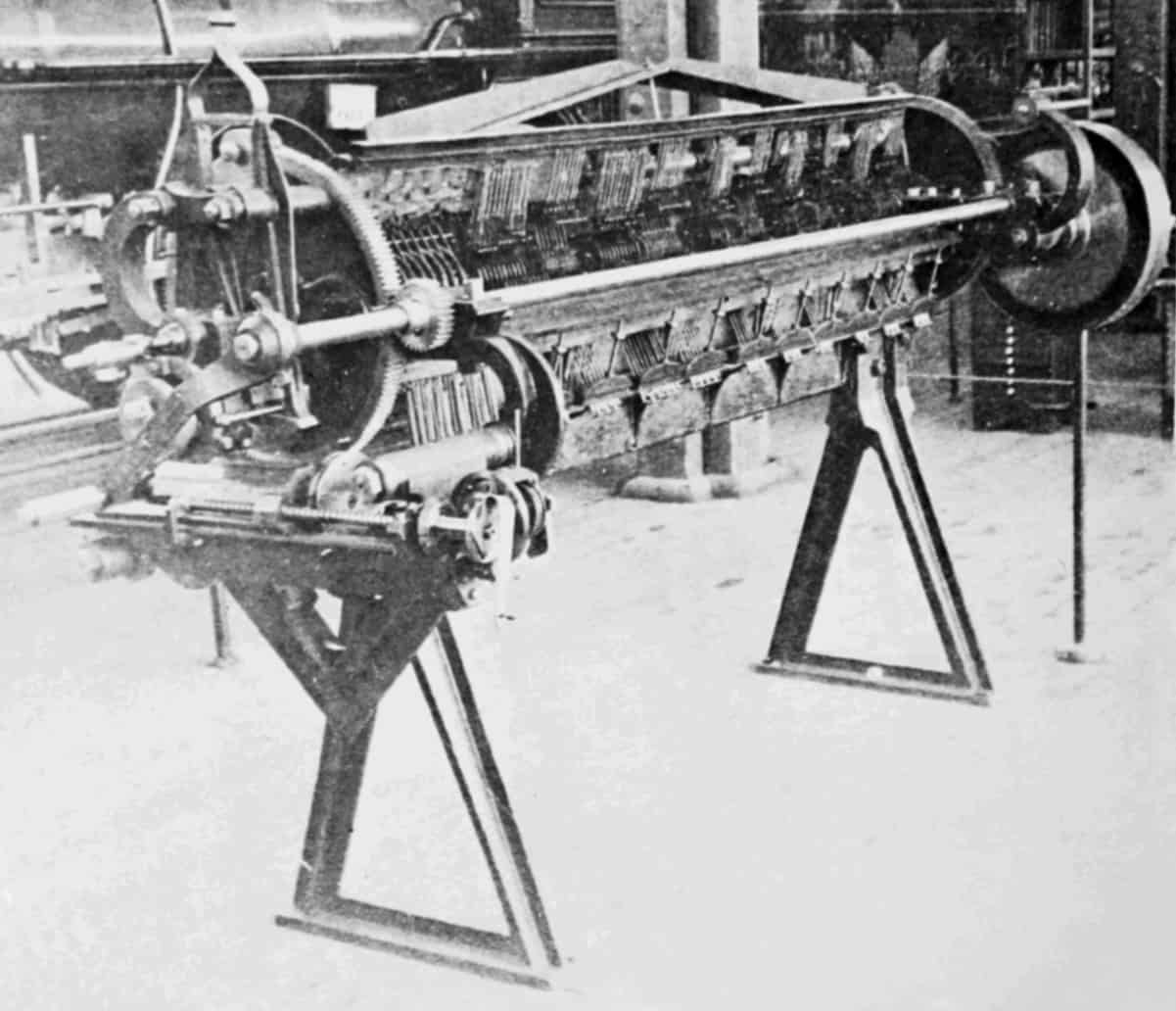Grant’s difference engine was invented in 1876 by George Grant. It was a calculating machine and was invented as a way to advance the current calculating machine technology. It used the latest design engineering to perform complex calculations which were otherwise unable to be completed. It was also a general purpose calculator and an early model was used to calculate life insurance tables.
The difference engine was powered by hand-cut gears using either an hand crank or an external motor. It could calculate between 10 and 12 terms per minute using a hand crank, or double that when using a power source. It was able to quickly perform calculations and the number wheels were arranged by the tubular value to simplify the design.
Quick Facts
- Created
- 1876
- Creator
- George Grant
- Original Use
- Calculating machine
- Cost
- $100
George Grant’s Difference Engine: History

©unknown author, Public domain, via Wikimedia Commons – Original / License
George Barnard Grant first started working on a mechanical calculator while a student at the Lawrence Scientific School at Harvard. He heard of Charles Babbage and his difference engine in 1870 and started working on his own version of a mechanical calculator for engineering purposes.
After being initially discouraged with the work, he was encouraged by Wolcott Gibbs, a Rumford Professor of Chemistry at Harvard, along with other professors at Harvard. These included Henry Lawrence Eustis, a professor of engineering, and Joseph Winlock, director of the Harvard College University.
Grant continued to work on mechanical calculators after earning a bachelor’s degree in 1873. He eventually created the difference engine and prepared it for exhibition in 1876.
Despite some publicity and favorable notices at the time of the exhibition (the insurance company Provident Mutual Life Insurance Co. even ordered a machine made to Grant’s design for the purpose of calculating life insurance tables), the difference machine soon faded into relative obscurity. Grant continued working on mechanical calculators. In the decades that followed, he invented a second small all-purpose calculator. His small calculators won some awards and were sold in small numbers.
Grant became best known, however, not for his remarkable mechanical calculators, but for establishing a business that was a derivative of his experimentation with calculators. Just as Babbage’s needs had led to advances in precision tool and parts manufacture in England, and Donkin’s requirements for the second Scheutz machine caused him to develop new production techniques, so Grant discovered that to obtain gears of the accuracy required for his calculators he had to cut his own gears.
Having hand-cut those on his early models, he established a gear-cutting machine shop in Charlestown, Massachusetts, soon after his graduation in 1873. As this business expanded, he moved it to Boston and named it the Grant Gear Works. From this extremely successful establishment sprang the Philadelphia Gear Works and the Cleveland Gear Works. Grant even wrote several very successful books on the subject, for example, A Treatise on Gear Wheels; A Handbook on the Teeth of Gears, their Curves, Properties and Practical Construction, etc. In fact, George Grant is considered one of the founders of the gear-cutting industry in the United States.
Whereas the Grant Gear Works continued to flourish after Grant’s death in 1917, his difference engine, sent back to Philadelphia in the 1890s, had assumed the status of an antiquated curiosity.
George Grant’s Difference Engine: How it Worked

The difference machine of Grant was approximately 2.5 meters long and 1.5 meters high, weighing about 900 kg. It could be manually operated or connected to a power source. It was said to calculate 10 to 12 terms per minute when hand-cranked and to compute more than double that amount when power-driven; small sections of it had been tested at even higher speeds. The inventor emphasized the flexibility of the machine, which allowed any number of wheels of the -th order of differences to be added to any wheel of the k-f 1-st order.
An important distinction between this difference machine and the model described in 1871 lay in the arrangement of the number wheels. It was again linear. But in the 1871 model, the wheels had been grouped by place figures, all the lowest decimal values being grouped together, then the next highest decimal value, etc. Within each such group appeared first the appropriate digit of the tabular value, then the corresponding one of the first order of differences, then that of the second order, and so on. Now the numbers were regrouped: all digits of the tabular value came first, then those of the first difference, then the second, etc. As a result, the carry mechanism, which was closely related to one covered by Grant’s general-purpose calculator patents, was simplified. The printing apparatus connected ten of the tabular function wheels with corresponding die-plates holding wax molds for subsequent electrotyping.
George Grant’s Difference Engine: Historical Significance
Just as Grant built upon the work of Charles Babbage and others, many more calculating machines would be created based on his invention. Grant was better known as the founder and engineering expert at Grant Gear Works, rather than being an inventor of a difference engine.
This calculating machine, after its initial fame at the Centennial Exhibition, was largely forgotten. It was primarily lauded by professors and actuaries until it was replaced by the next evolution in calculating machines. It sold for $100, but Grant didn’t sell a significant number of them.
Next Up…
- Louis Couffignal – Biography, History and Inventions
- Alexander John Thompson – Biography, History, and Inventions
- Analog Computer Explained: Everything You Need To Know
The image featured at the top of this post is ©unknown author, Public domain, via Wikimedia Commons.






